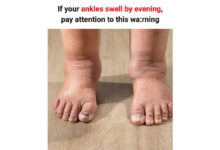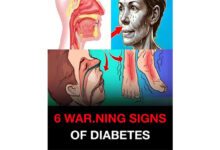How to reduce age spots: Causes, treatment, and prevention
Although time cannot be stopped, we may take action to maintain the health and vibrancy of our skin. Age spots, which are dark blotches that typically show up after years of sun exposure, are a frequent skin problem that arises with age.
Age spots, sometimes referred to as sunspots, liver spots, or solar lentigines, are dark patches of skin that usually show up on the face, hands, shoulders, and arms—areas of the body that are exposed to the sun the most.
According to the Cleveland Clinic, these skin patches are unrelated to your liver other than sharing a similar hue, which can range from tan to dark brown.
Rather, extended exposure to UV radiation causes melanin to aggregate in certain skin regions, which is the direct source of these undesirable patches.
Although they are more prevalent in those over 50, they can also appear in younger persons who have had a lot of sun exposure.
Although age spots are harmless, they can occasionally be confused with more dangerous diseases like melanoma, or skin cancer. Prevention and early detection are therefore essential!
Typical reasons
Sun exposure: Prolonged exposure to the sun is the leading cause of age spots. Your chance of developing these darker patches increases with the amount of time you spend outside without sun protection.
Sunlamps and tanning beds: Over time, age spots may develop as a result of the acceleration of melanin production caused by artificial UV exposure.
Genetics and skin type: Because they have less melanin in the first place, people with lighter skin are more likely to have age spots. Furthermore, the way your skin reacts to UV radiation may be influenced by your genetic makeup.

Hormonal changes: Some people are more prone to age spots because of hormonal changes, especially during pregnancy or menopause, which can occasionally result in enhanced pigmentation.
Skin protection is crucial for your general health as well as for aesthetic reasons, as excessive UV exposure can also raise your chance of developing skin cancer.
Cancer or sunspots?
Although age spots are mostly benign, it’s wise to monitor any changes in your skin. It’s worthwhile to get a spot examined if it appears abnormally dark or black, has ragged or uneven borders, or begins to vary in size, shape, or color.
Any discomfort, bleeding, or itching should also raise suspicions. A brief consultation with a dermatologist can offer comfort and aid in identifying any possible issues early on, even if the majority of age spots are not cause for concern.
Maintaining the health and protection of your skin can be greatly improved by taking the time to observe it.
Options for treatment
Although age spots don’t need to be treated, there are methods to make them look less noticeable if they concern you. There are a number of cosmetic procedures that can be used to lighten or completely remove them. Working with a qualified, certified dermatologist who can help you navigate the best alternatives for your skin is crucial.
Age spots can be faded or eliminated with the following cosmetic procedures:
Chemical peels: The top layers of skin are removed by a dermatologist using a chemical solution, exposing younger, less pigmented skin beneath. To choose the best peel for you, speak with an expert as they have varying strengths.
Think of dermabrasion as an extreme form of exfoliation. The outer layers of skin are removed with a high-speed instrument, which also helps to improve skin texture and even out pigmentation.
Laser resurfacing: Lasers cut down superfluous melanin and encourage the creation of new skin. Intractable age spots may be effectively and permanently removed using this method.
Cryotherapy: Excess pigment can be destroyed with a brief liquid nitrogen freeze, which will eventually cause the area to disappear.
Lightening creams: With regular usage, prescription creams that contain retinoids or hydroquinone can gradually reduce the appearance of age spots. However, since they can increase your skin’s sensitivity to UV radiation, make sure to wear them with sunscreen.
Please be aware that while natural cures like green tea, lemon juice, apple cider vinegar, and aloe vera do have brightening qualities, they won’t have the same noticeable effects as medical treatments.
Avoidance
Age spot fading treatments are widely accessible, although they can be expensive. The good news? In addition to being less expensive, prevention is also beneficial for the general health of your skin.
The Cleveland Clinic provides advice on how to prevent sun damage and UV rays:
Every day, apply a broad-spectrum sunscreen with at least SPF 30 and reapply it every two hours.
Steer clear of the sun between 10 a.m. and 2 p.m., when its rays are at their strongest.
Avoid tanning beds regardless of the situation.
Put on protective gear like long sleeves, slacks, or a hat with a wide brim.
Simple adjustments like these can make a big difference in maintaining youthful, healthy skin free from needless sun damage.
Keep in mind that growing older is a luxury rather than an issue. Healthy, glowing skin is the aim, regardless of whether you want to lighten or accept your sunspots.
To help your friends avoid or lessen the appearance of age spots, please share this article with them!

